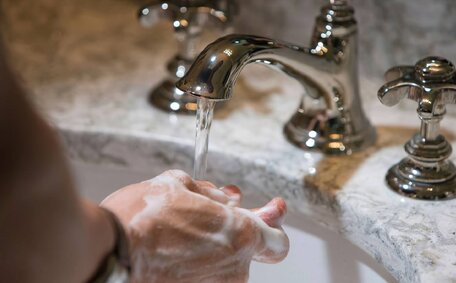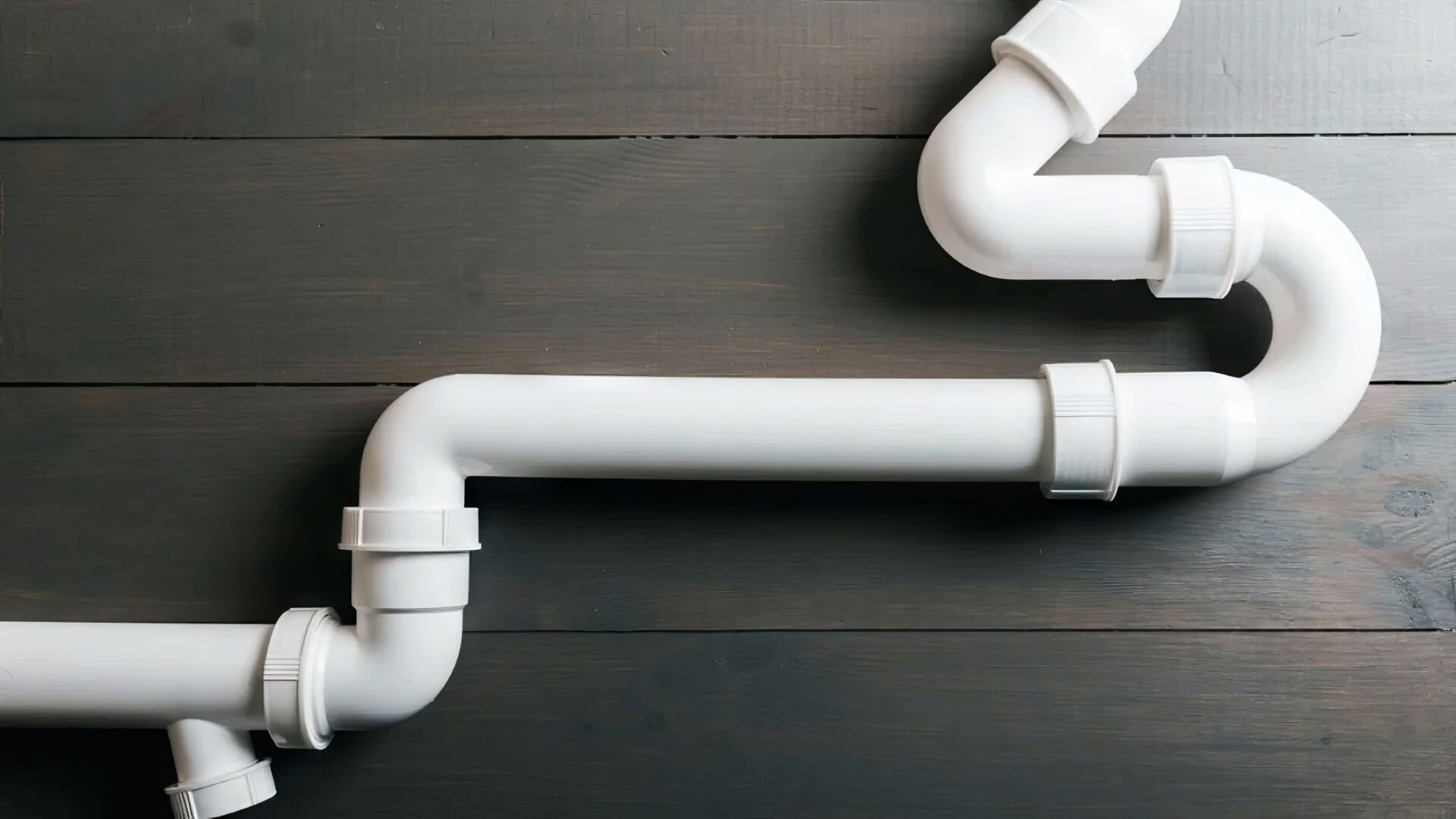Introduction to Pipe Relining
Pipe relining is a trenchless method of repairing damaged pipes without having to dig them up. It involves inserting a resin-saturated liner into the existing pipe and curing it in place to form a smooth, seamless new pipe lining inside.
Pipe relining is suitable for repairing leaks, cracks, root intrusion or corrosion damage in all types of pipes including sewer, stormwater and drainage pipes. It can restore structural integrity and flow capacity without the need to break ground, meaning no disruption to your property.
At Lalor Park Plumbing, we specialise in pipe relining and have the experience to assess if your pipes are suitable candidates. In general, pipes with a minimum diameter of 100mm can be relined, however smaller diameters may be possible on a case-by-case basis depending on access and site conditions.
The key benefits of pipe relining include:
- Trenchless - no need to dig up pipes
- Restores flow capacity and pipe integrity
- Cost-effective compared to pipe replacement
- Much less disruption to property
- Long lasting solution (decades of design life)
With over 10 years servicing the Sydney area, Lalor Park Plumbing has established a strong reputation for high quality pipe relining services. Contact us for a free assessment and advice on whether relining is the right solution for your pipes.
Understanding How Relining Affects Pipe Diameter
When pipes are relined, a resin-impregnated liner is inserted into the damaged pipe and cured in place. This lining forms a new pipe wall inside the old pipe. As part of this process, there is a slight reduction in the internal diameter.
Typically, relining causes approximately a 6mm reduction in diameter. So for example, a 100mm pipe would decrease to around 94mm internally after relining.
Importantly, this reduction does not negatively impact the flow capacity or effectiveness of the relined pipe in any significant way. A minor decrease of 6mm is quite small relative to most pipe diameters, so the effects on water flow rates are negligible.
It’s also worth noting that over time, pipes naturally build up internal scaling and deposits which also slowly decrease diameter and capacity. By relining pipes, we are restoring them almost to original as-new condition.
So in summary, while relining does technically cause a slight loss of diameter, this does not impede the pipe’s ability to function as intended. The restored integrity and lifespan more than make up for the marginal loss of width. And importantly, future blockages are prevented.
Let us know if you have any other questions around how relining might impact your existing pipes. We’re happy to provide more details or advice on your specific situation.
Typical Pipe Size Ranges Suitable for Relining
At Lalor Park Plumbing, our trenchless pipe relining services are suitable for a wide range of pipe diameters. In general, we can reline pipes from 40mm up to 225mm internal diameter.
This covers most typical pipe dimensions found in residential settings like homes and apartments. It also includes the larger pipes used in commercial buildings and complexes.
So whether you need drainage pipes, sewer lines, or any other pipe system relined, we can handle sizes ranging from:
- 40mm
- 50mm
- 65mm
- 80mm
- 100mm
- 150mm
- 200mm
- 225mm
With specialised CIPP lining equipment and experienced technicians, we have the capability to reline across this range of pipe diameters.
Smaller pipes like 40-50mm may require some customisation to access points, but we assess each site individually. We’ll advise if your pipes fall outside our standard size capabilities.
Generally though, the above range covers most typical residential and commercial pipelines, giving pipe relining broad utility.
Contact the team at Lalor Park Plumbing to discuss relining your pipes within these standard size parameters.
Impact of Relining on Flow Rate and Pipe Capacity
An often overlooked benefit of pipe relining is the potential improvement to flow rates and pipe capacity. By installing a smooth, jointless lining that conforms to the exact shape of the existing pipe, relining creates less friction loss as water flows through.
This means that in some situations, the maximum flow rate can increase after relining due to lower resistance. And importantly, the overall capacity is at least restored to original design standards.
Another advantage is that buildup and blockages are less likely to occur in the newly lined pipe system. The smooth surface makes it more difficult for deposits and debris to adhere inside over time. This helps maintain flow rates in the long term.
Improved flow and reduced blockages mean more effective drainage and waste removal. So you may notice fewer backups, flooding issues or slow-draining fixtures after relining.
At Lalor Park Plumbing, we use specialist CIPP lining technology to achieve excellent flow rate capabilities post-installation. And with regular maintenance, the benefits can last for decades before needing rehabilitation again.
Contact our team to learn more about how relining could potentially boost flow performance, in addition to stopping leaks and restoring structural stability.
Special Considerations for Relining
While pipe relining is suitable for most standard straight pipe configurations, there are some special cases that require additional planning and experience.
Pipes with multiple bends, junctions or non-uniform shapes can present challenges for relining. The flexible resin-impregnated liner must be able to navigate tight radiuses or multi-directional paths.
At Lalor Park Plumbing, our technicians are specially trained to handle these complex situations. We use advanced CIPP lining techniques to conform the materials to almost any pipe architecture. Custom installation rigs also improve liner insertion and curing.
Another consideration is the pipe material and construction. While relining is predominantly used for corroded metal pipes, it is also effective for cracked clay, concrete and even PVC networks. The resin bonds well to most substrates.
Older homes often have a mix of different pipe types interconnected. We can reline selective sections or entire combinations as needed - our liners form a unified new pipe wall regardless of the original material.
In summary, while intricacies like junctions, bends and mixed materials require specialised processes, pipe relining is still an applicable solution. Proper site inspection and planning is key, which Lalor Park Plumbing has perfected through years of trenchless relining experience.
Contact our team to discuss the unique considerations for relining your pipes beyond standard straight sections.
Dealing with Root Intrusions During Relining
Root intrusion is a common issue for pipe systems in the Lalor Park area. Over time, roots from nearby trees and shrubs can infiltrate cracks and gaps, causing blockages, leaks, and damage.
When preparing pipes for relining, it’s crucial that we thoroughly clear these root infestations first. We use high-powered water jetting to scrub away intruding roots within the pipes. This clears space for the relining materials to adhere and cure properly.
If roots are not removed, they will continue growing, pushing against the liner overtime. This could lead to future displacement or cracking. Pre-cleaning is essential for long term stability and performance.
During inspections, we will determine the extent of vegetation infiltration. Localised root masses may only need spot treatment, while more dispersed networks require overall jetting.
The CIPP liners themselves also form a fully sealed, root-resistant barrier after installation. So any remaining strands will not be able to penetrate further or cause issues.
By proactively dealing with root intrusions before our pipe relining process, we deliver durable solutions that will last for decades without needing repairs or rehabilitation.
At Lalor Park Plumbing, we have the specialised jetting equipment and expertise to handle root infestations of any degree. Contact our team to learn more about full encasement relining and the importance of pre-cleaning.
Comparing Costs of Relining vs. Replacement
When faced with damaged or failing pipes, homeowners have two main options - pipe relining or full replacement. But which is the most cost-effective solution?
Replacing pipelines is hugely disruptive, involving extensive excavation to access and remove old pipes before installing new ones. It also destroys surrounding structures like walls, floors and landscaping that must be reinstated.
The materials, labour and restoration works involved make replacement extremely costly. A typical bill can easily exceed $10,000 for a residential property.
In contrast, pipe relining is a trenchless process so requires no digging or destruction. Specially designed liners are inserted into the existing pipes to form a new barrier. Average job costs range from $2,000 to $4,000.
At Lalor Park Plumbing, we offer CIPP relining with a 50 year design life for maximum value. When comparing quotes, remember this long term reliability against cheaper short term fixes.
We also provide flexible payment plans to help spread costs over time. This makes pipe relining even more accessible.
So if faced with pipe repairs, consider trenchless relining as the most affordable and least disruptive option. Contact Lalor Park Plumbing to learn more about the cost differences or to get a quote for your property.
FAQs About Minimum Pipe Diameter and Relining
We often get asked questions about the minimum pipe diameter requirements for relining. Here are answers to some of the most common FAQs.
What is the smallest size pipe you can reline?
We can reline pipes down to 40mm in diameter. Anything smaller is generally too narrow for our lining equipment to fit.
Can you reline kitchen and bathroom pipes?
Yes, kitchen and bathroom pipes like sinks, basins and bathtubs often use 50mm diameter wastewater pipes which fall within our relining capabilities.
What if my pipes have reduced to half their original width?
Even severely corroded pipes can be suitable for relining. As long as access can be gained and the remaining opening is 40mm or more, we can reline it.
How do bends and corners affect the minium pipe diameter?
The resin liners we use can navigate multiple bends and elbows within the pipe. So minimum diameters are the same even for complex pipe layouts.
Is there a maximum size you can reline?
Yes, the maximum is around 225mm diameter for residential and commercial relining jobs under standard conditions.
For specialty industrial jobs, we can reline up to 1200mm with custom solutions. Contact us to discuss large scale pipe requirements.
Contact Lalor Park Plumbing for Your Relining Needs
At Lalor Park Plumbing, we are committed to providing exceptional service for all your pipe relining needs. With years of experience, we have the expertise to assess if trenchless relining is the right solution and make recommendations tailored to your specific requirements.
We use specialist CIPP liners and installation techniques to reline pipes from 40mm up to 225mm in diameter. This covers everything from residential kitchen sinks and laundry lines to large commercial drains and sewers.
Relining restores structural stability, flow capacity, and longevity without the major disruption and costs of full pipe replacement. We even provide flexible payment plans to make it more accessible.
Have damaged or deteriorating pipes? Want to stop frustrating leaks, backups and blockages for good? Need advice on whether relining is appropriate for your situation?
Contact the friendly, knowledgeable team at Lalor Park Plumbing today on 1300 349 338 or email [email protected]. We are always happy to discuss your needs, provide quotes and schedule pipe inspections at your convenience. Call now for exceptional service you can trust.






